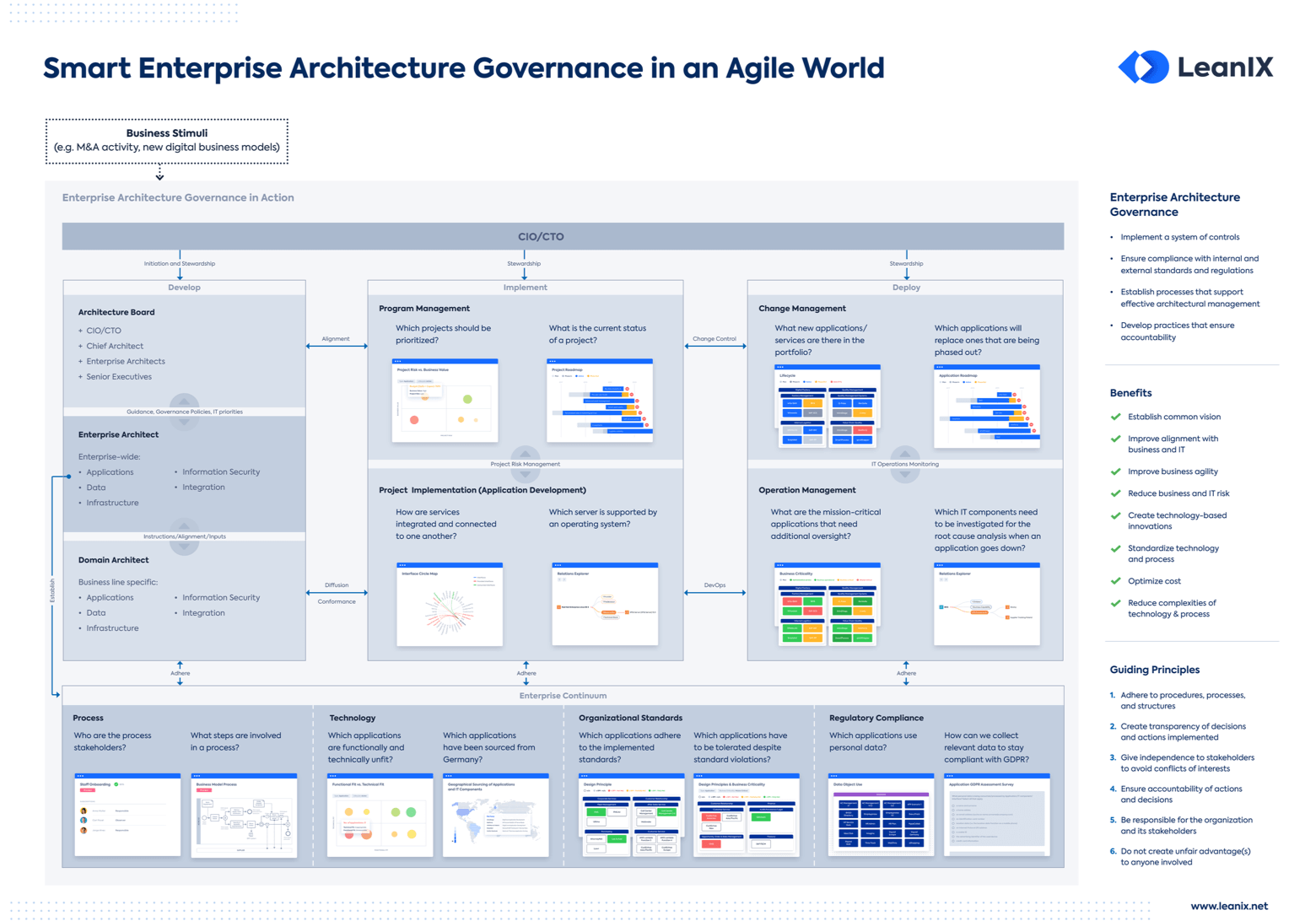Architecture review process
It's important to note that the specifics of this process can vary significantly. The structure and roles of the Architecture Review Board (ARB) involved will impact the process.
Each ARB may have different responsibilities, member expertise, and operational guidelines, which can influence how reviews are conducted.
This section details a typical step-by-step process, adaptable to the unique needs of different ARB structures.
1. Initiation of review
The review process begins when a project team submits a proposal or architecture document to the ARB. This document should outline the technical details, strategic relevance, and business justification for the project. The initiation phase exists for setting the context and expectations for both the project team and the ARB.
2. Pre-review preparation
Before the formal review meeting, ARB members review the submission documents in detail. This stage may involve gathering additional information from the project team, clarifying project details, and preparing initial feedback. Effective preparation ensures a focused and productive review meeting.
3. Conducting the review meeting
The review meeting is where the substantive evaluation occurs. The project team presents their proposal, highlighting how the project aligns with business objectives and architectural standards. ARB members discuss the proposal, ask questions, and evaluate its merits and drawbacks.
4. Feedback and revision
Following the review meeting, the ARB provides feedback to the project team. This feedback might include requests for modifications, additional information, or recommendations for alignment with broader architectural goals. The project team may need to revise their proposal and resubmit it for further review.
5. Decision making
Once the ARB is satisfied that the proposal meets all requirements and standards, it makes a decision. This could be an approval, conditional approval with specific stipulations, or rejection. The decision is documented along with the rationale, ensuring transparency and accountability in the decision-making process.
6. Documentation and follow-up
After a decision is made, the ARB ensures that all decisions and their justifications are well-documented. This documentation serves as a reference for future projects and helps maintain continuity in architectural governance. Follow-up actions might include monitoring the implementation of approved projects.
7. Continuous improvement
The architecture review process should be periodically reviewed and refined based on feedback and evolving organizational needs. This continuous improvement helps the ARB adapt to new challenges and changes in the technological and business environments.
Architecture review board checklist and templates
To streamline the architecture review process, ARBs utilize various tools such as checklists and templates. These instruments help ensure consistency, efficiency, and thoroughness in evaluating EA & IT projects.
This section explores key checklists and templates that are crucial for effective ARB operations.
Checklist for preparing for a review
A comprehensive checklist comes in handy for both the project team and the ARB members to prepare for a review meeting. This checklist typically includes:
- Project overview: A brief description of the project and its objectives.
- Alignment with strategic goals: Evidence of how the project aligns with the organization’s strategic goals.
- Architectural documentation: Complete architectural diagrams and supporting documents.
- Compliance requirements: A list of compliance checks and standards the project needs to meet.
- Risk assessment: An analysis of potential risks associated with the project.
A checklist ensures that all necessary information is considered and discussed, facilitating a more structured and effective meeting.
Template for submission to the ARB
To maintain uniformity in how information is presented to the ARB, a standard submission template can be highly beneficial
This template should guide the project teams on what information needs to be included, such as:
- Project description: Detailed explanation of the project.
- Business case: Justification for the project from a business perspective.
- Technical specifications: Detailed technical information, including system architecture and integration points.
- Expected outcomes: Anticipated results and benefits of the project.
A standardized template ensures that ARB members receive all the necessary information to make informed decisions.
Decision-making and documentation templates
Decision-making templates aid ARB members in evaluating the projects systematically and making decisions based on set criteria. These templates often include:
- Evaluation criteria: Specific metrics or standards against which projects are assessed.
- Decision options: Different decision types (e.g., approve, reject, defer) along with criteria for each.
- Rationale for decision: Space for documenting the reasoning behind each decision.
Additionally, documentation templates help in recording the outcomes of the review process. This documentation is essential for transparency and for future reference.
It typically includes details of the decision, feedback given to the project team, and any follow-up actions required.
Clear, consistent, and structured methods, enhance the effectiveness of the Architecture Review Board.
Best practices for an effective Architecture Review Board
The following practices are essential for maximizing the ARB's positive impact on the organization's EA governance and architectural consistency.
Clearly define roles and responsibilities
Each member should understand their duties, the extent of their authority, and their accountability. This clarity helps in preventing overlaps, conflicts, and gaps in the review process, ensuring smooth and efficient operations.
Foster a collaborative environment
Collaboration among ARB members and project teams enhances the quality of decisions and fosters a culture of trust. The ARB mustn't be seen as a gatekeeper but as a partner in achieving architectural excellence.
Maintain rigorous documentation
Documentation is vital for transparency and continuity. Detailed records of decisions, rationales, and feedback provide a trail for accountability and refine future reviews. It ensures consistency in how architectural standards are applied and enables new members to come up to speed quickly.
Implement regular training and updates
As technological landscapes and business strategies evolve, regular training for ARB members on the latest technologies, architectural trends, and regulatory changes is crucial. Keeping the board updated ensures that their decisions are informed by the most current knowledge and best practices.
Establish metrics for success
Defining and measuring success is crucial for any governance body. Establish specific metrics to assess the effectiveness of the ARB. These can be:
- The number of projects successfully aligned with the business strategy,
- Improvements in project outcomes, or
- The efficiency of the review process.
Regularly reviewing these metrics helps identify areas for improvement and demonstrates the ARB’s value to the organization.
Review and refine processes continuously
The ARB should periodically review its own processes and governance frameworks to ensure they remain relevant and effective. This continuous improvement approach allows the ARB to adapt to new internal or industry challenges and changes.
Encourage feedback loops
Engaging with stakeholders and soliciting feedback on the ARB’s processes and decisions can provide valuable insights. This feedback loop highlights areas where the ARB might improve and help maintain alignment.
Adhering to these best practices will significantly enhance the functionality and impact of an Architecture Review Board.
A well-organized, transparent, and proactive governance body ensures architectures effectively support strategic objectives and adapt to changing business environments.

/EA-Governance_Poster_Resource_Page_Thumbnail.png?width=550&height=385&name=EA-Governance_Poster_Resource_Page_Thumbnail.png)





/EN/Tools/EA-Maturity-Thumbnail.png?width=400&height=283&name=EA-Maturity-Thumbnail.png)

